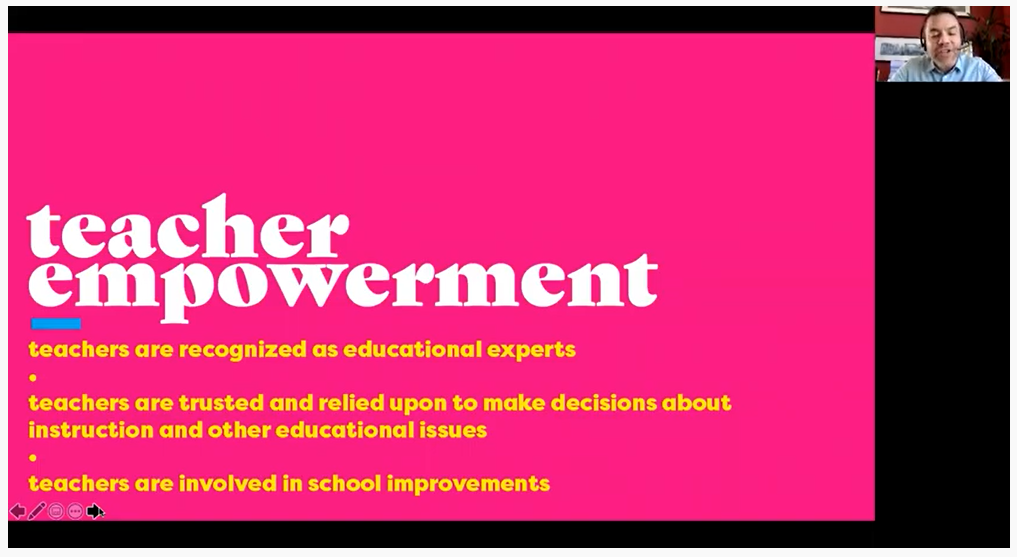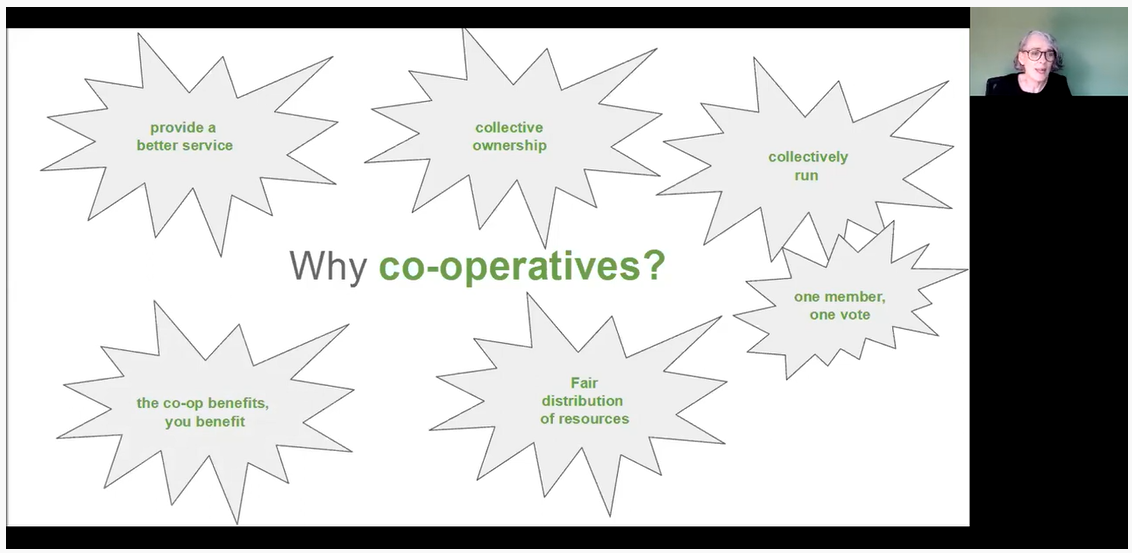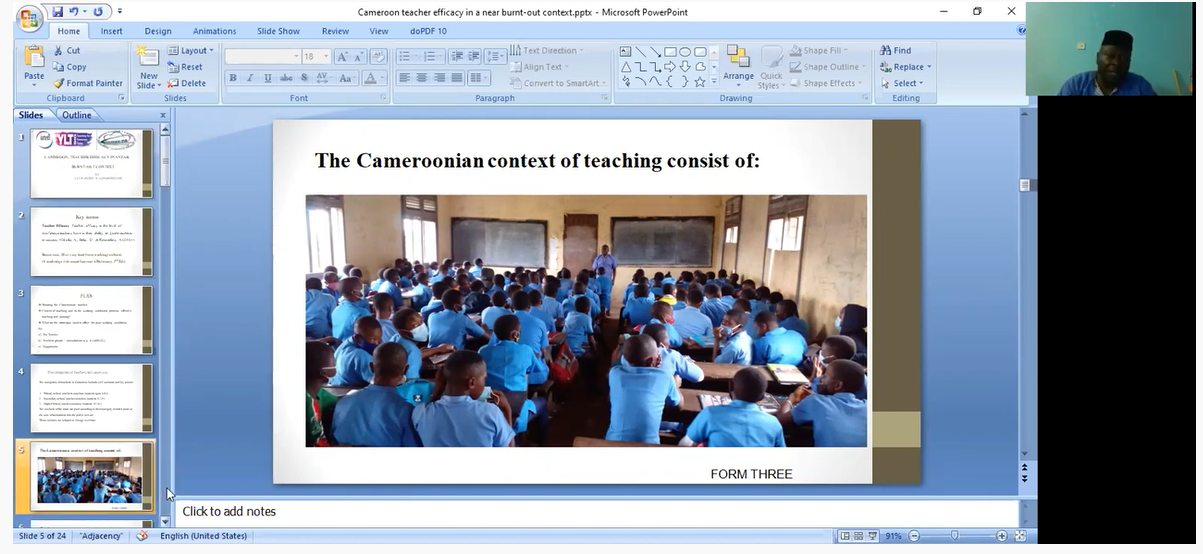Teaching as a profession requires a certain level of education and training to effectively carry out a plethora of duties and responsibilities. Teachers of children and teenagers need to be well-trained as their work involves considerable responsibility, accountability, and an ethical stance. In other words, teaching English to children and teenagers is not an easy job, which is why some schools strive to find and keep good teachers. One way to motivate teachers is by promoting a supportive, safe, and comfortable school culture and a professional work environment. However, research indicates how retention of teachers is a major problem and that they are leaving the ELT profession due to industry-like working conditions.
As this is a global issue, it was addressed directly during the IATEFL YLTSIG 35th Anniversary Web Conference last November. One of the strands focused on the working conditions of teachers around the world. I have summarized the strand with some relevant information from the sessions, delivered by five inspirational practitioners.
Analyzing teachers’ working conditions, self-efficacy, and learning outcomes – Vinicius Nobre
In his highly reflective plenary, Vinnie urged teachers to act collectively towards further professionalizing the ELT industry. He argued that we must act to trigger change and improve overall conditions for TEYL practitioners because they work with a crucial age group who can help change the world. Then, Vinnie elaborated on the political, social, and educational ramifications of poor working conditions at schools. When conditions are poor, teachers feel less efficient and feel they cannot give their best. This takes a serious toll on their motivation, and they leave the profession. High turnover in any industry is bad, but in education it has profound consequences, and the cost is high – the quality of education declines. Less qualified teachers take over, thus depriving generations of early years, primary and secondary learners of opportunities to develop because their teachers are still learning how to do their jobs. Training teachers is costly, so this puts a strain on recruiting, hiring, and training budgets.

Vinnie maintained that building strong collegial relationships is one way to break the vicious cycle. He also argued the need for initiatives that aspire to improve practitioners’ working conditions, focusing on several key aspects:
- School leadership which collaborates with teachers, thus setting the tone for mutuality and trust;
- Professional development which fosters collaboration with colleagues, but at the same time is data-driven, takes into consideration teachers’ needs, and is aligned with the school context;
- Timing and workloads which are realistic and protecting teachers from duties that might interfere with their main focus – educating students; and
- Allocating adequate technical and human resources to support teachers in their work.
Vinnie then gave specific examples of how to support teachers, and you can watch the recording here.
Measuring and increasing teacher engagement and well-being – Claire Venables
Self-efficacy, engagement, and well-being were the topics of Claire’s talk. She started by highlighting the fact that efficacy is possible if there are substantial levels of engagement and well-being – a lesson she learned from collaborating with teachers of children and teenagers in Brazil. Teachers around the globe are trying to minimize the negative effects the past two years have had on student learning and engagement. This places high demands on teachers, who are in many contexts on the edge of burnout. So, Claire maintained that the actual challenge is not necessarily training teachers, but rather, re-engaging them.
As a firm believer in evidence-based practices, Claire devised a very practical idea which includes using weekly surveys to gauge the level of engagement of the teachers she is working with. This is important because positive impact needs to be fueled by evidence, especially since there is confusion about what engagement is. Engagement is often mistaken for involvement, satisfaction, or motivation. Claire gave clear examples to explain how it is possible to have both a motivated but disengaged team.

Claire learned that teacher surveys have multiple benefits as teachers of children and teenagers feel that they have a say, and their voices are heard. This helps create a sense of belonging among the team. They can also help academic managers and teacher educators evaluate the success or potential failure of any initiative to implement institutional change. Normally, surveys are used at the end of a learning cycle, but Claire showed how at this point it is too late to make significant changes. In comparison, weekly surveys measure how teachers are feeling week in and week out. Finally, Claire argued how by adopting a bottom-up approach, this provides consistent data to better inform decisions made regarding professional development initiatives. You can watch Claire’s talk here.
Stories from the frontline: Working conditions in ELT – Bernie Kennedy
Bernie was representing the TEFL Workers’ Union and started her Inspire session with a poll, asking participants if they thought that working conditions in ELT were fair. An overwhelming majority answered negatively. She mentioned how she never discusses the downsides of ELT with people outside of the industry, so she sometimes feels like a fraud. In all honesty, I can relate to this as Bernie went on to share some staggering statistics from various teaching contexts. For example, a chain of language schools in the US keep teachers’ hours below the required threshold, preventing their legal entitlements to benefits. In the UK, Japan and Canada, early career teachers contribute two to three hours of unpaid work per week. In Spain, teachers are sometimes paid only one preparation hour for every thirty contact teaching hours. Some teachers in the Philippines are paid $1 an hour for online classes.
Being underpaid is not the only issue. Teachers must market themselves, often competing with one another, and jobs are still restricted to L1 users of English in some contexts. On the other hand, L2 users of English, while qualified, are frequently compelled to lower their fees. Conditions are even worse for freelance teachers as platforms charge for their services, so to stay afloat the workload of too many practitioners is heavy and lacks any payment for sick days or benefits. As the pandemic unfolded, these unacceptable conditions only worsened.

Cameroon: Teacher efficacy in a near burn-out context – Simon Ayukabore
Simon’s talk painted a challenging picture of tough working conditions for teachers of children and teenagers in Cameroon. He gave examples of large, multi-grade classes, low-resource contexts, a lack of materials, and the absence of technology in most schools. Innovations such as inclusive education are often forced on teachers without any training. He also highlighted how the socio-political crisis has had a profound effect on teaching and learning – last year only 31% of schools were functioning. There is an acute shortage of teachers in rural schools so urban centers are overcrowded. On top of this, teachers in the northwest and southwest of the country risk their lives every day, working in conflict zones. Aside from the armed conflict taking part in these regions, teachers have to deal with rodents, snakes, classrooms without furniture or electricity.

However, Simon also highlighted how teachers have demonstrated clear resilience. Many have invested in online training, joined national and international organisations, shared best practices, created forums for discussions and shared resources, and engaged in group empowerment. He ended with a call to action for the government in Cameroon to better recognize the efforts of teachers and provide more support for teaching children and teenagers. This should include training in educational technologies, subsidising internet data, and partnering with international organisations on the in-service development of teachers and school inspectors. You can watch Simon’s talk here.
Teachers of children and teenagers and gatekeepers they face – Aleksandra Popovski
Alex delivered a notable talk on the gatekeepers preventing change in TEYL by focusing on two critical factors pertaining to working conditions – salary and working hours. Compared to other professions, salaries in the ELT industry are quite low. In some parts of the world, they tend to stay low, for example, teachers in South-East Europe have to work for 40 years to reach the top salary tier. Primary teachers earn less than their counterparts in secondary level education. Disproportionate salary levels are reflected in the TEYL sector also: an L2 user of English teacher in the US earns $6 per hour, compared to the $16 paid to L1 users of English. To suggest that teachers in TEYL are underpaid is an understatement – quite simply, they earn the same low wages as nonprofessional workers.
Quoting OECD data, Alex highlighted another critical issue – teachers spend less time teaching than they do on administrative work (lesson planning and preparation, record keeping, and marking). Teachers from the private sector often teach 30 to 40 contact hours per week; added to this, is about 10 hours of preparation for which they are not compensated. Many teachers in TEYL are not on permanent contracts, so any benefits such as health insurance are self-funded.

Therefore, according to Alex, who are the gatekeepers preventing genuine change? Governments and commercially-driven entities. They shape education by controlling working conditions – voting against pay rises, restricting opportunities for growth, cutting budgets for professional development, and increasing teachers’ workloads. Alex ended her talk with a call for advocacy, urging professional teachers’ associations around the world to use their influence to instigate real change – helping teachers improve their working conditions, and contributing to professionalising TEYL. You can watch Alex’s talk here.
The strand overall
All of these sessions had a common thread: the message that the real change starts with us – teachers and teacher educators. As Vinnie emphasised several times during his plenary, practitioners seeking to ameliorate their working conditions, must think globally and act locally.

